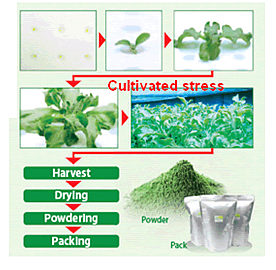
┬Ā
Our stress over-load cultivation system be able to totally
By pushing the “crop” and “boosting ingredient” button on the system screen at the automatic control management PC, automatic operation is carried out the
It also corresponds to agricultural cloud computing, It made possible to check and change the environment setting values and monitor values even in remote areas via
┬Ā
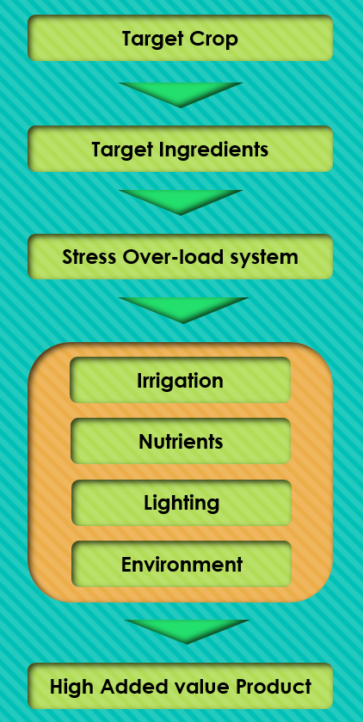
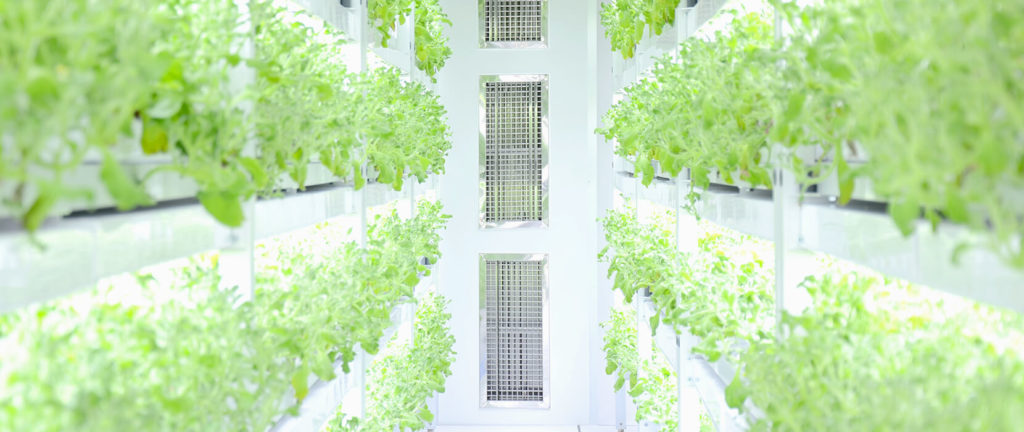
As an application example, we developed the system to increase
We are also working
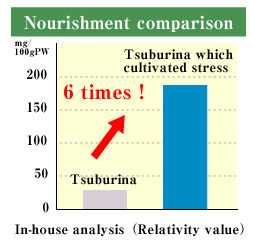
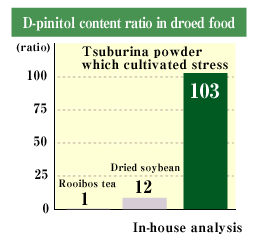
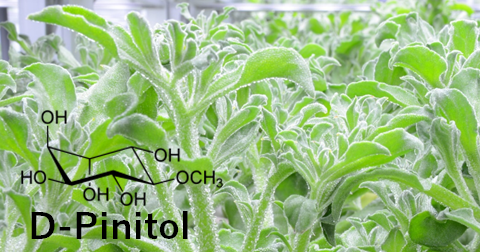
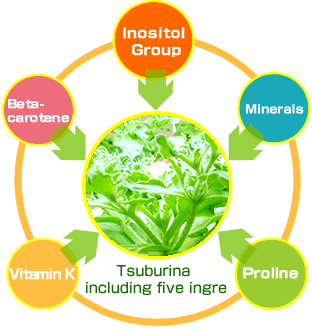
ŌĆ£Ice-plant which cultivated in stress environment, an essential ingredient for ŌĆ£GlacitorŌĆØ contains┬Āhuge
Pinitol┬Āis┬Ā
Pinitol was registered as a prescription supplement for the prevention of lifestyle-related diseases by the Food and Drug Administration (FDA) (in December 1997). Pinitol was certified as an ingredient for specified health use by the Korea Food and Drug Administration (KFDA) (in May 2007).
As an example of an effect of pinitol, the study results on the mechanism of improving the blood sugar was published in the journal of British pharmaceutical association in 2000.
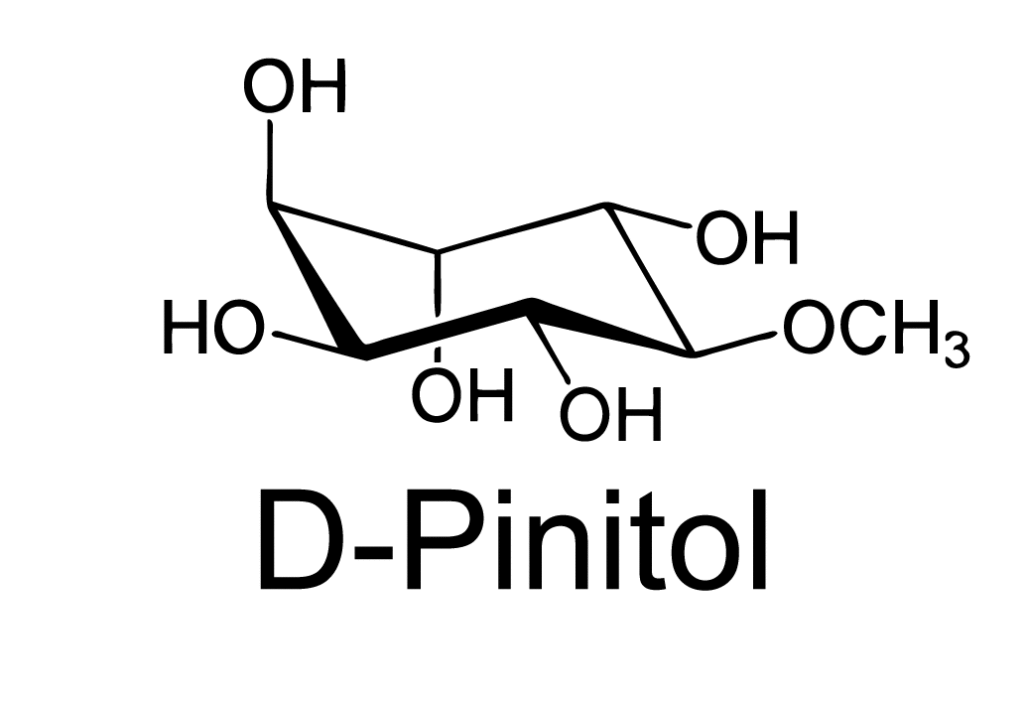

AGEs have been attracting attention in the field of product developments, especially in the market of health and beauty products in Japan.
ŌĆ£GlycationŌĆØ is to connect suger and protein in the body, called Maillard reaction. AGEs shall be restrained by the materials of anti-glycation, which would be a key to keep our health and beauty.
Since Tsuburina which cultivated stress for Glacitor are cultivated in the indoor clean room, besides pesticide-free production, there are extremely few general live germs.
This means we can adopt sophisticated drying technology to maintain nourishment found in Tsuburina, such as Vitamins, Phyto-chemicals, since the nutrient ingredients are weak against heat.
Tsuburina powder, which cultivated stress, is rich in Minerals, Vitamins, Phyto-chemicals, AHA fruit acids, etc. as a result of the fact that it is concentrated.
The characteristics of producing Tsuburina in vertical farms are No herbicides, No pesticides, Stable production and Quality Stability.
GLACITOL is derived from Tsuburina cultivated in vertica farms with controlled environment technology.
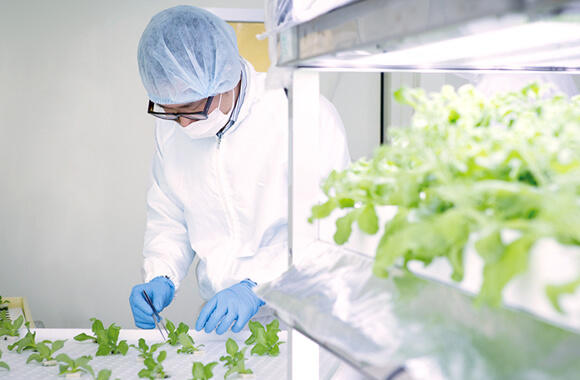

| Ingredient | Content(/100g) |
|---|---|
| Water | 3.7g |
| Protein | 23.8g |
| Fat | 7.4g |
| Ash | 25.1g |
| Sugar | 23.5g |
| Dietary fiber | 16.5g |
| Energy | 289Kcal |
| Sodium | 520mg |
| Inspection item | Measurement result |
|---|---|
| Cadmium | ND |
| Lead | ND |
| Arsenic | ND |
| Total chromium | ND |
| Total mercury | ND |
| Number of general bacteria | 740CFU/g |
| Coliform group | Negative |
| O-157 | Negative |
| Iodine-131 | ND |
| Cesium-134 | ND |
| Cesium-137 | ND |
| Ingredient | Content ’╝ł/100g) | |
|---|---|---|
| Minerals | Zinc | 2.50mg |
| Copper | 0.62mg | |
| Iron | 8.02mg | |
| Manganese | 14.8mg | |
| Magnesium | 230mg | |
| Calcium | 641mg | |
| Vitamins | VitaminŃĆĆC | 154mg |
| Vitamin B6 | 1.93mg | |
| Vitamin K1 | 3.43mg | |
| Vitamin E | 28.7mg | |
| Pinitol (Inositols) | 3.82g (In-house analysis) | |
| Phytochemicals | Total polyphenol | 560mg |
| Lutein | 56.9mg | |
| Zeaxanthin | 3.0mg | |
| Beta-carotene | 38.3mg | |
| Coenzyme Q10 | 3.5mg | |
| Alpha hydroxy acid (AHA) | Malic acid | 3.24g |
| Citric acid | 5.55g | |
| Amino acid | Proline | 2.90g (In-house analysis) |
| Others | Total ferulic acid | 95mg |
| Total ORAC value | 140╬╝moITE/g | |
| SOD value (Superoxide dismutase) | 720SODunit/g |
Analyzed by the Japan Food Research Laboratories and HIYOSHI Corporation.

